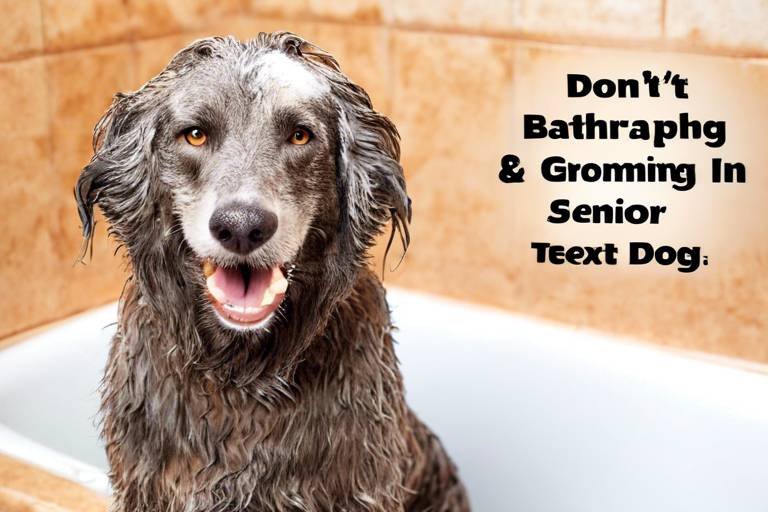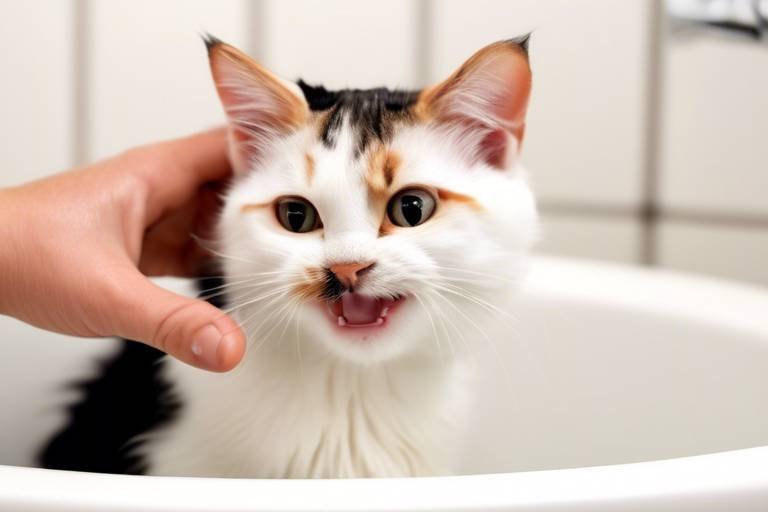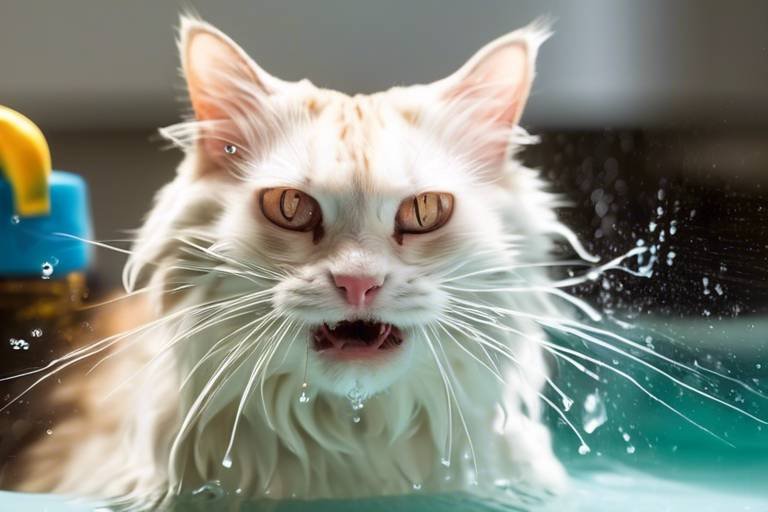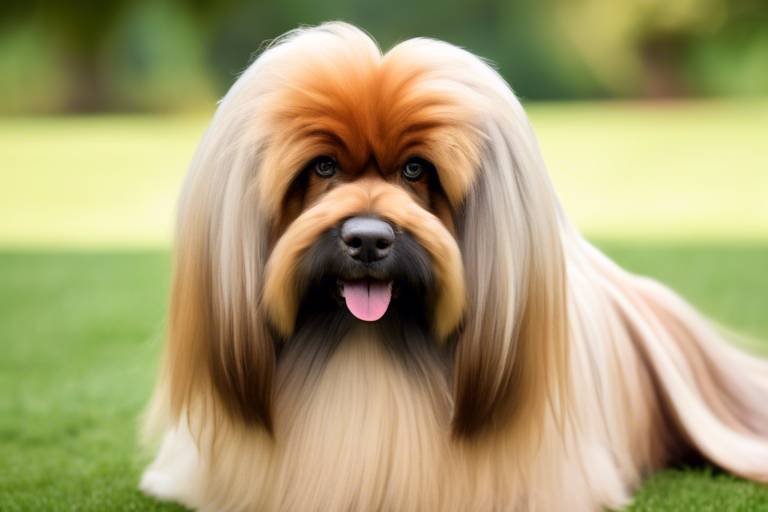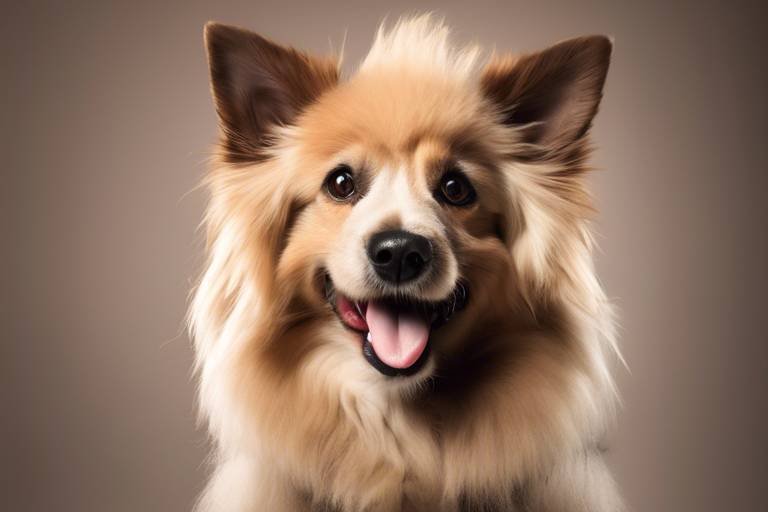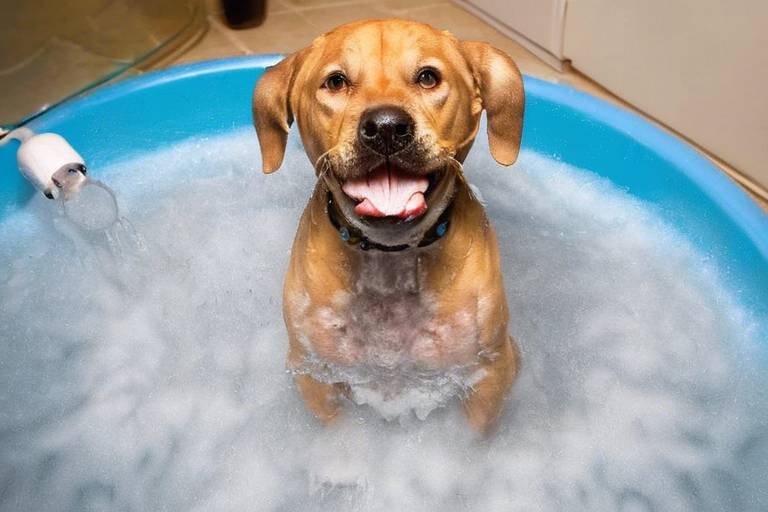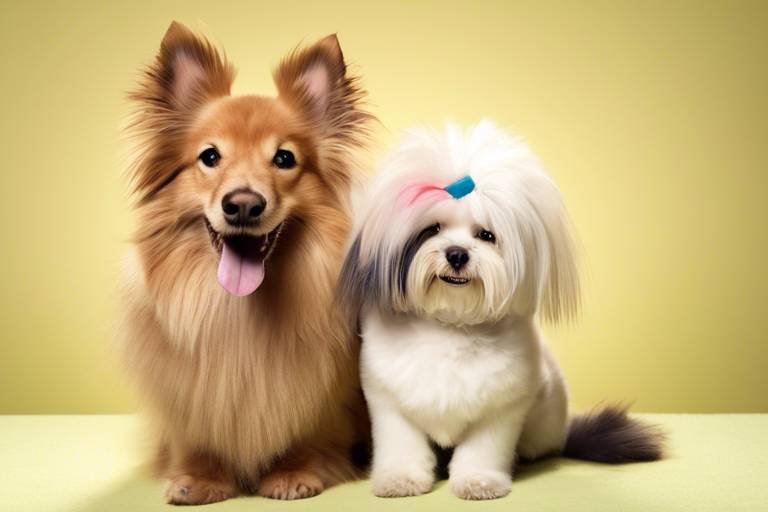Tips for Bathing and Grooming Senior Dogs
Bathing and grooming your senior dog is not just about keeping them clean; it’s a vital part of their overall health and well-being. As our furry companions age, they become more sensitive to various factors, and their grooming needs evolve. This article provides essential tips and best practices for bathing and grooming senior dogs, ensuring their comfort and health during the process. Discover techniques tailored to their unique needs and sensitivities, because let’s face it, a happy dog makes for a happy owner!
As dogs age, their grooming needs change significantly. Senior dogs often experience a variety of physical changes, such as decreased mobility, thinner skin, and changes in coat texture. Understanding these specific requirements can help ensure that your senior dog feels comfortable and safe during bath time and grooming sessions. For instance, you might notice that your dog is less tolerant of loud noises or sudden movements, so a calm and gentle approach is essential. Think of it like a spa day for your pup—soft music, gentle touches, and a warm bath can make all the difference!
Selecting appropriate shampoos and grooming tools is crucial for senior dogs. Look for products that cater to sensitive skin and coat conditions common in older dogs to avoid irritation. Products with natural ingredients can be a great choice, as they tend to be gentler on aging skin. Remember, the right tools can make the grooming process smoother and more enjoyable for both you and your furry friend.
When it comes to bathing your senior dog, opting for hypoallergenic and moisturizing shampoos can work wonders. These products are specifically formulated to soothe sensitive skin and maintain a healthy coat while minimizing discomfort during baths. Imagine using a warm, soothing lotion on your own dry skin—your dog deserves that same level of care! Look for shampoos that contain ingredients like oatmeal or aloe vera, which are known for their calming properties.
Consider the benefits of organic grooming products over commercial ones. Organic options often contain fewer harsh chemicals, making them gentler on aging skin. While commercial products might be more affordable, they can sometimes lead to skin irritations or allergic reactions, which is the last thing you want for your senior dog. It’s worth investing a little more in products that promote health and comfort.
Using ergonomic grooming tools designed for ease of use can significantly reduce stress for both you and your senior dog during grooming sessions. Look for brushes with comfortable grips and rounded edges to prevent any accidental nicks. A well-chosen grooming tool can turn a potentially stressful experience into a bonding moment between you and your furry friend.
Employ gentle bathing techniques that prioritize comfort. Using a non-slip mat in the tub can help prevent slips and falls, which is especially important for dogs with mobility issues. Warm water is also key—just like we enjoy a warm bath after a long day, your senior dog will appreciate it too! Create a calming environment by speaking softly and reassuringly throughout the bathing process.
Establishing a regular grooming schedule is vital. Senior dogs may require more frequent grooming due to changes in their coat and skin condition, ensuring they remain clean and comfortable. A good rule of thumb is to groom them at least once a week, but this can vary depending on the breed and health of your dog. Think of it like regular check-ups; consistency is key to maintaining their health.
Learn to recognize signs that indicate your senior dog needs grooming. Some common indicators include:
- Excessive shedding
- Matting in the fur
- Visible dirt or odor
- Skin irritations or redness
Being proactive about grooming can help keep their coat healthy and prevent any discomfort.
For dogs with mobility challenges, consider alternative grooming methods. Portable bathing systems and professional groomers can help accommodate their needs without causing stress. If your dog struggles to stand for long periods, a gentle sponge bath might be a better option. Always prioritize their comfort and well-being, as it’s not just about looking good; it’s about feeling good!
After bathing, proper care is essential. Drying techniques and skin moisturizers can help maintain your senior dog's coat health and prevent dryness or irritation. Just like we moisturize our skin after a shower, your dog will benefit from a little extra TLC post-bath.
Explore various drying methods, such as towel drying or using a low-heat dryer, to ensure your senior dog remains comfortable and safe after their bath. Avoid high-heat settings, as they can be too harsh for sensitive skin. Instead, think of it as giving your dog a gentle hug with a warm towel!
Applying a gentle moisturizer can help soothe and hydrate your senior dog's skin after bathing, especially if they have dry or sensitive skin conditions. Look for products specifically designed for dogs, as human moisturizers can sometimes contain ingredients that are not safe for pets. A little extra moisture can go a long way in keeping your furry friend comfortable and happy!
Q: How often should I bathe my senior dog?
A: It generally depends on your dog's breed and coat type, but most senior dogs benefit from a bath every 4 to 8 weeks. Always monitor their coat and skin condition to determine the best schedule.
Q: What if my dog has mobility issues?
A: Consider using a portable bathing system or seek the help of a professional groomer who can accommodate your dog's needs safely.
Q: Can I use human shampoo on my dog?
A: It's best to avoid using human shampoo, as it can irritate your dog's skin. Opt for shampoos specifically designed for dogs, especially those with sensitive skin.
Q: How can I make grooming more enjoyable for my senior dog?
A: Create a calm environment, use gentle techniques, and offer treats or praise throughout the process to make grooming a positive experience.
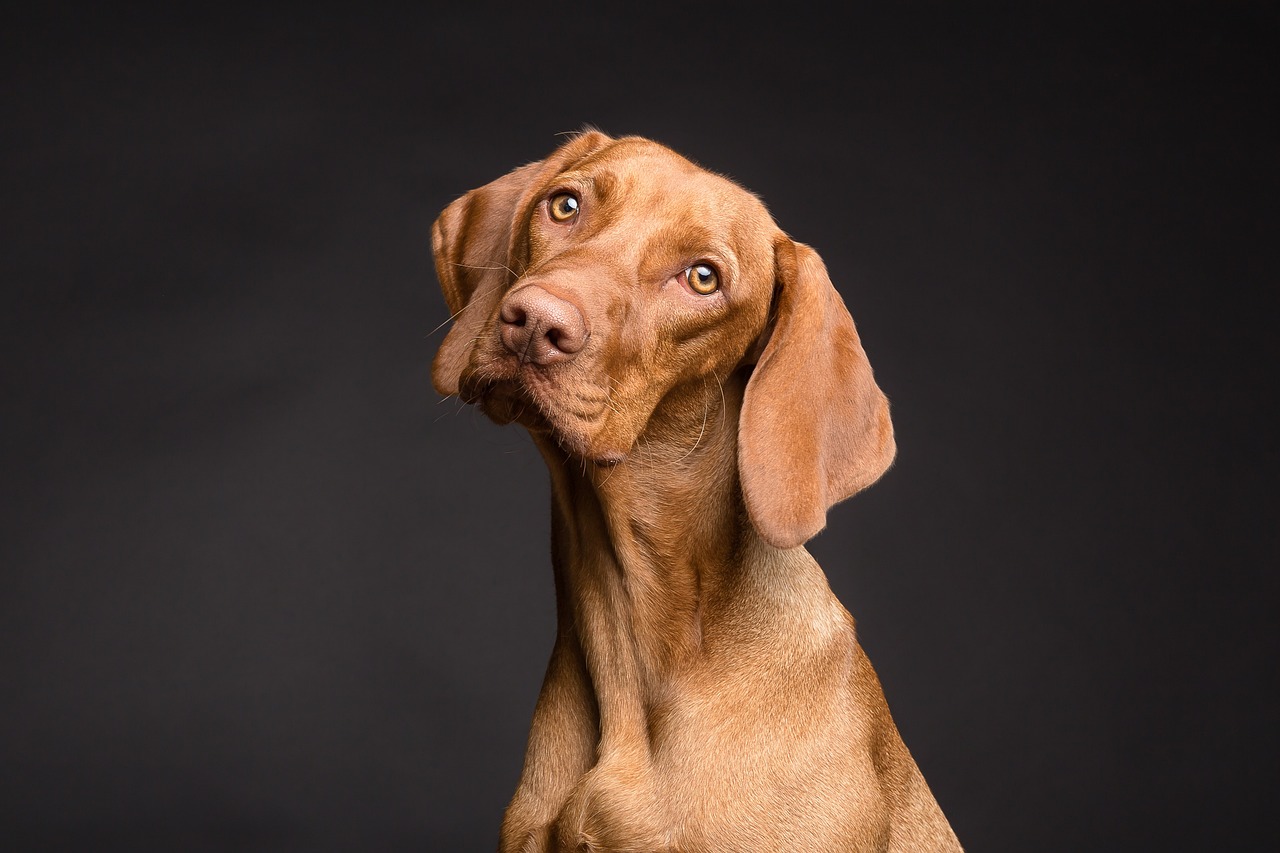
Understanding Senior Dog Needs
This article provides essential tips and best practices for bathing and grooming senior dogs, ensuring their comfort and health during the process. Discover techniques tailored to their unique needs and sensitivities.
As our furry friends age, their needs evolve significantly, and understanding these changes is crucial for their well-being. Senior dogs often experience a myriad of physical and emotional changes that can affect their grooming and bathing experiences. For instance, they may develop arthritis or other mobility issues, making it difficult for them to stand for long periods or jump into the bathtub. This means that as pet owners, we need to adapt our grooming techniques to ensure their comfort and safety.
Moreover, senior dogs may have thinning coats or skin that is more sensitive than it once was. This can lead to increased irritation during baths if the wrong products are used or if the bathing process is too rough. Therefore, it's essential to be gentle and observant. Watch for signs of discomfort, such as whining or trying to escape, and adjust your approach accordingly.
Additionally, many senior dogs suffer from conditions like dry skin or allergies, which can be exacerbated by harsh grooming products. It's vital to choose products specifically formulated for their sensitive skin and to maintain a consistent grooming routine to help manage these issues. Regular grooming not only helps keep their coat healthy but also allows you to monitor their skin for any changes that may require veterinary attention.
In summary, understanding the unique needs of senior dogs is about more than just keeping them clean; it’s about ensuring their overall comfort and health. By being mindful of their physical limitations and skin sensitivities, you can turn grooming time into a positive experience that strengthens your bond.
Selecting appropriate shampoos and grooming tools is crucial for senior dogs. Look for products that cater to sensitive skin and coat conditions common in older dogs to avoid irritation.
Opt for hypoallergenic and moisturizing shampoos that soothe sensitive skin. These products help maintain a healthy coat while minimizing discomfort during baths for senior dogs.
Consider the benefits of organic grooming products over commercial ones. Organic options often contain fewer harsh chemicals, making them gentler on aging skin.
Using ergonomic grooming tools designed for ease of use can significantly reduce stress for both you and your senior dog during grooming sessions.
Employ gentle bathing techniques that prioritize comfort. Using a non-slip mat and warm water can help create a calming environment for your senior dog.
Establishing a regular grooming schedule is vital. Senior dogs may require more frequent grooming due to changes in their coat and skin condition, ensuring they remain clean and comfortable.
Learn to recognize signs that indicate your senior dog needs grooming, such as excessive shedding, matting, or skin irritations, to keep their coat healthy.
For dogs with mobility challenges, consider alternative grooming methods. Portable bathing systems and professional groomers can help accommodate their needs without causing stress.
After bathing, proper care is essential. Drying techniques and skin moisturizers can help maintain your senior dog's coat health and prevent dryness or irritation.
Explore various drying methods, such as towel drying or using a low-heat dryer, to ensure your senior dog remains comfortable and safe after their bath.
Applying a gentle moisturizer can help soothe and hydrate your senior dog's skin after bathing, especially if they have dry or sensitive skin conditions.
- How often should I bathe my senior dog? It depends on their coat type and activity level, but generally, every 4-6 weeks is a good rule of thumb.
- What signs indicate my dog is uncomfortable during grooming? Look for signs like whining, trying to escape, or excessive panting.
- Can I use regular dog shampoo on my senior dog? It's best to use shampoos specifically formulated for sensitive skin to avoid irritation.
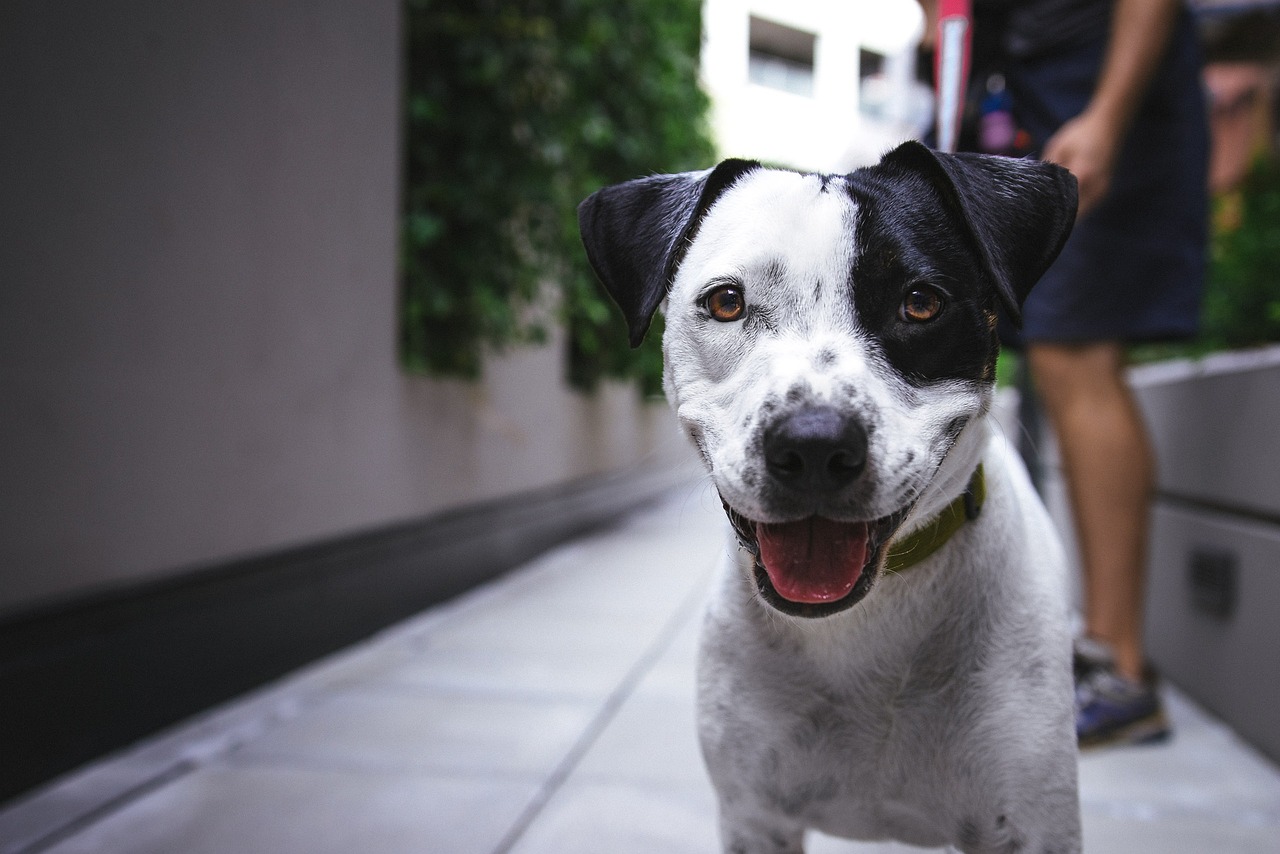
Choosing the Right Products
When it comes to bathing and grooming your senior dog, selecting the right products is absolutely crucial. As our furry friends age, their skin and coat often become more sensitive, requiring special attention and care. Investing in high-quality grooming supplies not only ensures your dog’s comfort but also promotes their overall health. So, how do you navigate the vast sea of grooming products available today? Let’s dive in!
First and foremost, consider the type of shampoo you choose. It's essential to look for hypoallergenic options that are specifically formulated for sensitive skin. Many senior dogs develop skin conditions such as dryness or allergies, which can lead to discomfort during bath time. A good hypoallergenic shampoo will help maintain their natural oils, ensuring their coat remains healthy and shiny. Additionally, moisturizing shampoos can help soothe any existing irritations, making bath time a more enjoyable experience for your furry companion.
When selecting a shampoo, you might come across a variety of options. Below are some characteristics to look for:
- Natural Ingredients: Look for shampoos containing natural ingredients like aloe vera or oatmeal, which are known for their soothing properties.
- pH Balanced: Ensure the product is pH balanced specifically for dogs, as human shampoos can be harsh and irritating.
- Fragrance-Free: Opt for unscented products to avoid any potential allergic reactions that may arise from artificial fragrances.
Now, let’s talk about the ongoing debate between organic and commercial grooming products. While both can be effective, organic products often have the upper hand when it comes to gentleness. They typically contain fewer harsh chemicals, making them a safer choice for your senior dog’s delicate skin. If your dog has a history of skin issues or allergies, going organic might be the best route. However, if you decide to stick with commercial products, always read the labels carefully to ensure they are free from harmful additives.
In addition to shampoos, the tools you use for grooming are equally important. Ergonomic grooming tools can greatly reduce stress for both you and your senior dog. Look for brushes and combs that are designed for ease of use, particularly those with comfortable grips. This can make the grooming process smoother and more enjoyable. Furthermore, consider using tools that are specifically designed for senior dogs, such as:
- Soft-Bristled Brushes: These are gentle on the skin and can help prevent irritation.
- De-shedding Tools: These can be effective in managing excessive shedding, which is common in older dogs.
- Non-Slip Grooming Mats: These mats can provide stability and comfort during grooming sessions.
By carefully selecting the right products and tools, you can create a grooming routine that is not only effective but also enjoyable for your senior dog. Remember, the goal is to make them feel safe and comfortable throughout the process. With a little bit of thought and consideration, you can ensure that your beloved pet enjoys their grooming sessions and maintains a healthy, beautiful coat.
Shampoos for Sensitive Skin
When it comes to bathing your senior dog, choosing the right shampoo is essential, especially if your furry friend has sensitive skin. As dogs age, their skin can become thinner and more prone to irritation, making it crucial to use products that are gentle yet effective. Hypoallergenic shampoos are a fantastic option, as they are formulated to minimize allergic reactions and are often free from harsh chemicals and fragrances that could exacerbate skin issues. These shampoos not only cleanse but also nourish the skin, helping to maintain its natural moisture balance.
Another important factor to consider is the moisturizing properties of the shampoo. Look for products that contain natural ingredients such as aloe vera, oatmeal, or coconut oil. These ingredients are known for their soothing and hydrating effects. For instance, oatmeal is particularly beneficial as it can help relieve itching and irritation, providing a calming effect on your dog’s skin. Additionally, shampoos with added vitamins, like Vitamin E, can support skin health and promote a shiny coat.
It's also wise to be aware of the pH balance of the shampoo. Dogs have a different skin pH than humans, so using a product designed specifically for dogs is essential. A shampoo with a balanced pH can help maintain the natural barrier of your dog’s skin, preventing dryness and irritation. When shopping for shampoos, always read the labels and choose products that explicitly state they are safe for senior dogs or those with sensitive skin.
To make an informed decision, consider the following table that compares some popular shampoos for sensitive skin:
| Shampoo Brand | Key Ingredients | Benefits |
|---|---|---|
| Earthbath Oatmeal & Aloe | Oatmeal, Aloe Vera | Soothes itchy skin, hypoallergenic |
| Vet’s Best Hypoallergenic Shampoo | Aloe, Vitamin E, Neem Oil | Moisturizes, reduces irritation |
| Pawsitively Posh Dog Shampoo | Lavender, Chamomile | Calming, gentle on sensitive skin |
In addition to selecting the right shampoo, it’s important to test the product on a small patch of your dog’s skin before full use. This precaution helps ensure that your dog does not have an adverse reaction to the shampoo. If you notice any redness or irritation, discontinue use immediately and consult your veterinarian for alternative recommendations.
Ultimately, bathing your senior dog can be a pleasurable experience for both of you, provided you use the right products. By choosing a shampoo tailored for sensitive skin, you not only help maintain your dog’s coat but also enhance their overall comfort and well-being during bath time.
Q: How often should I bathe my senior dog?
A: It generally depends on your dog's lifestyle and coat condition. However, most senior dogs benefit from a bath every 4-6 weeks. Always consult your veterinarian for personalized advice.
Q: Can I use human shampoo on my dog?
A: It's not recommended. Human shampoos can disrupt your dog's skin pH balance and lead to dryness or irritation. Always opt for dog-specific shampoos.
Q: What should I do if my dog has skin allergies?
A: Consult your veterinarian for a proper diagnosis and treatment plan. They may recommend specific hypoallergenic shampoos or medications to manage the condition.
Organic vs. Commercial Products
When it comes to grooming your senior dog, the choice between organic and commercial products can be a crucial one. Many pet owners are increasingly leaning towards organic options, and for good reason! Organic grooming products are typically made from natural ingredients, which means they are less likely to contain harsh chemicals that can irritate your dog's sensitive skin. Just like humans, dogs can suffer from allergies and skin issues, especially as they age. By choosing organic, you can provide a gentler alternative that helps maintain your dog's skin health without the risk of adverse reactions.
On the other hand, commercial products often boast a wide range of benefits, including targeted formulations for specific coat types or skin conditions. However, these products may contain synthetic fragrances, preservatives, and other additives that could exacerbate existing sensitivities. It's essential to carefully read labels and choose products that are free from sulfates and parabens, regardless of whether they're organic or commercial.
To help you make an informed decision, here’s a quick comparison:
| Aspect | Organic Products | Commercial Products |
|---|---|---|
| Ingredients | Natural, fewer chemicals | May contain synthetic additives |
| Skin Sensitivity | Gentler on sensitive skin | Potential irritants |
| Environmental Impact | More eco-friendly | Can contribute to pollution |
| Cost | Often higher | More affordable options available |
Ultimately, the right choice depends on your dog's specific needs and sensitivities. Many pet parents find that a combination of both organic and commercial products works best. For example, you might use an organic shampoo for regular baths while opting for a commercial conditioner designed to tackle specific coat issues. The key is to monitor your dog's reaction and adjust your grooming routine accordingly.
In conclusion, whether you choose organic or commercial products, always prioritize your senior dog's comfort and health. A little extra effort in selecting the right grooming products can go a long way in ensuring your furry friend enjoys their bath time!
Grooming Tools for Easy Handling
When it comes to grooming senior dogs, choosing the right tools is crucial for both their comfort and your ease of use. Ergonomic grooming tools can make a world of difference, especially for those of us who might not have the strongest grip or endurance. Imagine trying to brush a squirming pup with a tool that feels awkward in your hand—it's a recipe for frustration! Instead, look for grooming tools that are designed with comfort in mind. These tools often feature soft grips and lightweight materials, allowing you to groom your dog without straining your wrist or fingers.
One of the best investments you can make is in a high-quality brush tailored for your dog's coat type. For example, slicker brushes work wonders for dogs with longer fur, while rubber curry brushes are perfect for short-haired breeds. Not only do these brushes help remove loose hair, but they also stimulate the skin, promoting a healthy coat and reducing shedding. Additionally, consider using grooming gloves, which can be a fantastic alternative. They allow you to bond with your dog while brushing, making the experience feel more like a gentle petting session rather than a chore.
Another essential tool is a pair of nail clippers or a nail grinder specifically designed for senior dogs. As dogs age, their nails may become more brittle and sensitive, so opting for a quieter, less intimidating nail grinder can help ease anxiety during this process. Remember, keeping your dog's nails trimmed is not just about aesthetics; it’s crucial for their mobility and overall comfort. If your dog is particularly nervous about grooming, you might want to consider a grooming toolkit that includes a variety of tools, such as:
- Soft-bristle brushes for sensitive skin
- De-shedding tools for heavy shedders
- Ear cleaning solutions and cotton balls
- Dog-safe wipes for quick clean-ups
In summary, investing in the right grooming tools can transform the grooming experience for both you and your senior dog. By prioritizing comfort and ease of use, you can make these sessions enjoyable rather than a dreaded chore. Remember, grooming isn't just about keeping your dog looking good; it's about maintaining their health and happiness as they age.
Q1: How often should I groom my senior dog?
A1: The frequency of grooming depends on your dog's coat type and condition. Generally, senior dogs may require grooming every 4 to 6 weeks, but those with longer fur may need it more often.
Q2: Can I use regular dog shampoo on my senior dog?
A2: It's best to use shampoos specifically formulated for senior dogs, as they often have sensitive skin. Opt for hypoallergenic and moisturizing options to avoid irritation.
Q3: What should I do if my senior dog has mobility issues?
A3: Consider using portable bathing systems or consult with professional groomers who can accommodate your dog's needs. You can also groom them in a comfortable position, like on a soft surface.
Q4: Are there any specific tools recommended for senior dogs?
A4: Yes! Look for ergonomic brushes, gentle nail clippers or grinders, and grooming gloves that allow you to bond with your dog while grooming.
Bathing Techniques for Comfort
Bathing a senior dog can often feel like a daunting task, both for you and your furry friend. However, with the right techniques, you can transform this essential grooming activity into a comfortable and enjoyable experience for your aging companion. The key lies in creating a soothing environment that caters to their specific needs. Begin by ensuring the bathing area is safe and accessible. A non-slip mat can be a game changer, providing stability and preventing slips, which can be particularly concerning for senior dogs who may have mobility issues.
When it comes to water temperature, think of it as a warm hug! Senior dogs often have thinner skin, making them more sensitive to temperature extremes. Use lukewarm water to keep your dog comfortable throughout the bath. A handheld showerhead or a gentle spray nozzle can help you control the water flow, allowing you to wash your dog without overwhelming them. Remember, the goal is to make bath time as stress-free as possible. You might even consider speaking softly to your dog during the process, reassuring them that everything is okay.
Another important aspect is the bathing position. If your dog struggles to stand for long periods, consider using a bathtub or basin that allows them to sit comfortably. This way, you can wash them while they’re seated, minimizing any strain on their joints. For larger breeds, a portable bathing system can be a lifesaver, allowing you to wash them outdoors if that’s more convenient. If your dog enjoys the outdoors, a warm day can make for a delightful bath experience!
During the bath, be gentle and patient. Use a soft sponge or cloth to apply shampoo, and take your time to massage it into their coat. This not only helps to clean their fur but also provides a soothing sensation that many dogs appreciate. When rinsing, ensure that all shampoo is thoroughly washed away to prevent any irritation to their skin. A good rule of thumb is to rinse until the water runs clear. Additionally, consider using a moisturizing rinse to help maintain their skin's hydration. This can be particularly beneficial for senior dogs prone to dryness.
Lastly, once the bath is complete, drying your dog properly is crucial. Opt for a soft towel or a low-heat dryer, as hot air can be uncomfortable for their sensitive skin. Gently pat them dry instead of rubbing vigorously, which can cause unnecessary stress and discomfort. Keeping your senior dog comfortable throughout the bathing process is essential not only for their physical well-being but also for their emotional health.
- How often should I bathe my senior dog? It depends on their breed and lifestyle, but generally, every 4-6 weeks is a good rule of thumb.
- Can I use regular dog shampoo on my senior dog? It's best to use shampoos that are specifically formulated for sensitive skin to avoid irritation.
- What if my dog is afraid of baths? Gradually introduce them to the bathing process, using treats and positive reinforcement to create a more enjoyable experience.
- Is it necessary to dry my dog after a bath? Yes, drying is important to prevent chilling and skin issues, especially in senior dogs.
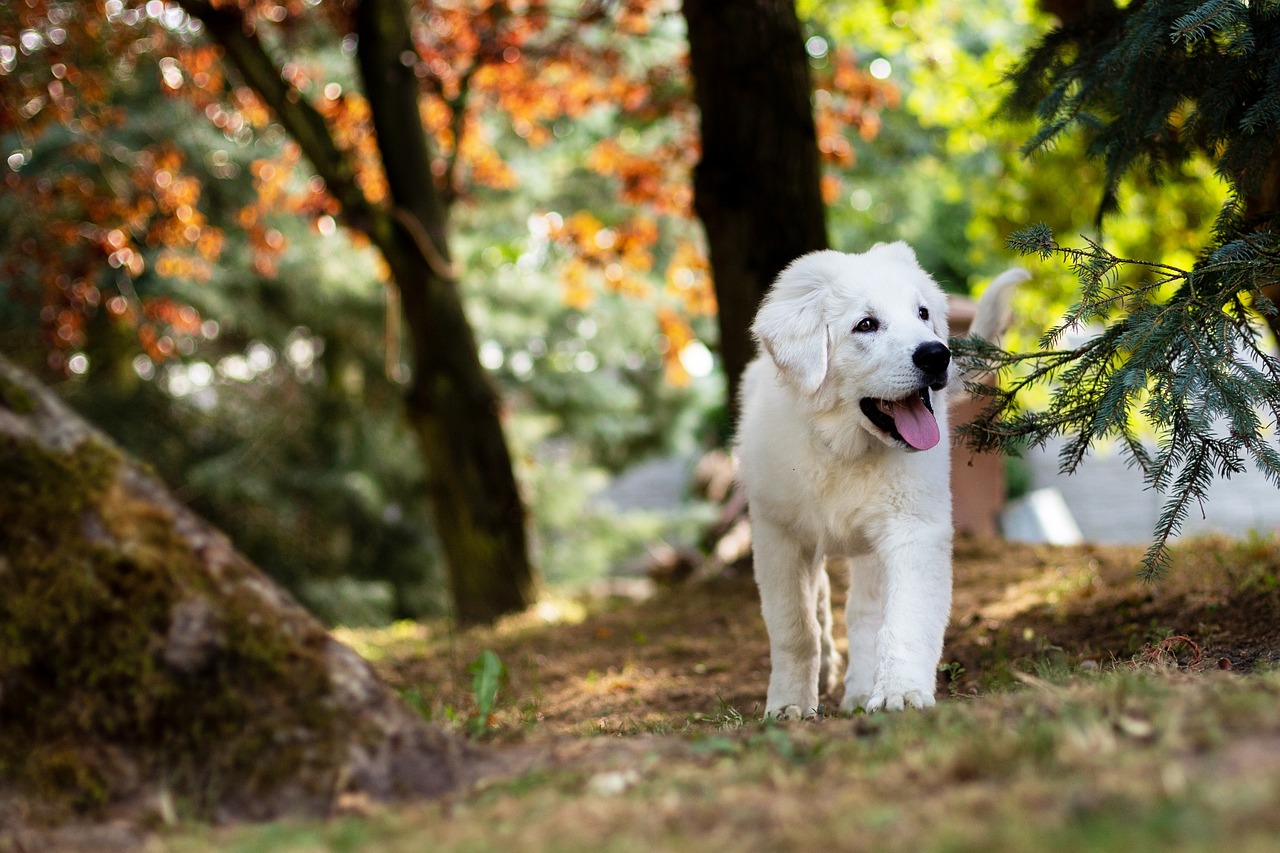
Frequency of Grooming
Establishing a regular grooming schedule for your senior dog is not just a good idea; it’s essential for their overall well-being. As dogs age, their grooming needs often change dramatically. You might notice that their coat becomes thicker or thinner, and their skin may become drier or more sensitive. This is why it's crucial to adapt your grooming routine to accommodate these changes. But how often should you groom your senior pooch? Well, it really depends on several factors, such as their breed, coat type, and any specific health issues they may have.
Generally speaking, senior dogs may require more frequent grooming compared to younger dogs. This is because older dogs are more prone to issues like matting, excessive shedding, and skin irritations. A good rule of thumb is to groom your senior dog at least once a week. However, some breeds with longer or thicker coats might need grooming every few days to keep their fur in good condition. On the other hand, short-haired breeds may get away with grooming every two weeks. The key is to pay attention to your dog’s specific needs and adjust your schedule accordingly.
Here are some signs that indicate your senior dog might need a grooming session sooner rather than later:
- Excessive Shedding: If you find tufts of fur around your home, it’s time to groom.
- Matting: Tangles and mats can be uncomfortable and painful for your dog.
- Skin Irritations: Redness, bumps, or unusual odors can signal that grooming is overdue.
Additionally, as your dog ages, they may develop mobility issues that can make grooming more challenging. In such cases, you might want to consider alternative grooming methods. For instance, portable bathing systems can simplify the process, allowing you to groom your dog in a more comfortable setting. If you’re not up for the task, professional groomers who specialize in senior dogs can be a great option. They know how to handle older dogs with care, ensuring that the experience is as stress-free as possible.
Ultimately, the frequency of grooming should be tailored to your senior dog’s unique needs. Regular grooming not only keeps your dog looking their best but also allows you to check for any skin issues or lumps that may require veterinary attention. So, grab that brush and schedule those grooming sessions—your furry friend will thank you for it!
Q: How often should I bathe my senior dog?
A: Generally, bathing every 4 to 6 weeks is sufficient unless your dog gets particularly dirty or has a skin condition that requires more frequent bathing.
Q: What if my senior dog has mobility issues?
A: Consider using a portable bathing system or hiring a professional groomer who can accommodate your dog's mobility challenges.
Q: Are there specific grooming tools I should use for senior dogs?
A: Yes, ergonomic grooming tools can make the process easier for both you and your dog, reducing stress during grooming sessions.
Q: Can I use the same grooming products for my senior dog as I do for younger dogs?
A: It's best to choose products specifically designed for sensitive skin, as older dogs may have different skin needs compared to younger ones.
Signs Your Dog Needs Grooming
Recognizing the signs that your senior dog needs grooming is crucial for their overall health and comfort. As dogs age, their grooming needs can change significantly, and being attentive to these changes can prevent discomfort and health issues. One of the most obvious signs is excessive shedding. If you notice more fur around your home than usual, it might be time for a grooming session. Senior dogs often experience changes in their coat, leading to increased shedding.
Another indicator is matting. If you see tangles or mats forming in their fur, especially in areas like behind the ears or under the belly, it’s essential to address this promptly. Mats can pull on the skin and cause pain or irritation, making it uncomfortable for your furry friend. Additionally, watch for skin irritations. If you notice redness, flakiness, or unusual odors, these could be signs of skin conditions that require grooming and possibly a vet visit.
Some dogs may also exhibit behavioral changes when they need grooming. If your dog seems restless, scratches more than usual, or shows signs of discomfort when you touch certain areas, it’s a clear signal that they might need a good grooming session. Keeping an eye on their behavior can be just as important as monitoring their physical appearance.
Here are some common signs to look for:
- Excessive shedding: More fur than usual around the house.
- Matting: Tangles or knots in the fur.
- Skin irritations: Redness, flakiness, or bad odors.
- Behavior changes: Restlessness or discomfort when touched.
By being vigilant and responsive to these signs, you can ensure that your senior dog remains comfortable and healthy. Regular grooming not only helps maintain their coat but also provides an opportunity to check for any underlying health issues. Just like us, our furry friends feel their best when they look their best!
Q: How often should I groom my senior dog?
A: The frequency of grooming can vary based on your dog's breed, coat type, and health. Generally, senior dogs may require grooming every 4 to 6 weeks, but you should adjust this based on their specific needs.
Q: What if my senior dog is reluctant to be groomed?
A: If your dog shows reluctance, try to make grooming a positive experience by using treats, gentle praise, and short sessions. If necessary, consult a professional groomer who specializes in senior dogs.
Q: Are there specific grooming tools for senior dogs?
A: Yes! Look for ergonomic tools that are easy to handle and designed for sensitive skin. Brushes with soft bristles and non-slip grips can help make the process smoother for both you and your dog.
Q: Can I use regular dog shampoo on my senior dog?
A: It's best to use shampoos formulated for sensitive skin, as senior dogs may have skin that is more prone to irritation. Hypoallergenic and moisturizing shampoos are great options.
Adapting to Mobility Issues
As our furry companions age, they often face a range of mobility challenges that can complicate their grooming routines. If your senior dog is experiencing difficulty standing or moving around, it’s essential to adapt your approach to ensure their comfort and safety. Think of it like adjusting the sails on a boat; you want to navigate the waters smoothly without causing any unnecessary stress for your beloved pet.
One effective way to accommodate a senior dog with mobility issues is by utilizing portable bathing systems. These systems are designed to make the bathing process easier for both you and your dog. They often come with adjustable heights and non-slip surfaces, allowing your dog to feel secure during bath time. Imagine how much more relaxed your dog will be when they don't have to struggle to get into the tub or shower!
Additionally, consider scheduling appointments with professional groomers who specialize in senior dogs. These professionals are trained to handle dogs with mobility challenges and can provide a stress-free grooming experience. They often have the right equipment, including hydraulic tables that lower to the ground, making it easier for your dog to hop on without straining themselves. It’s like having a personal spa day tailored just for them!
When grooming at home, it’s crucial to create a calm environment. Use a soft mat or towel to provide traction and comfort, preventing slips and falls. You might also want to keep the grooming sessions short and sweet, focusing on one area at a time. This approach not only reduces anxiety but also makes the experience more enjoyable for your dog. After all, who wouldn’t appreciate a gentle massage while getting pampered?
Lastly, pay close attention to your dog’s body language. If they seem uncomfortable or anxious, it might be time to take a break or switch to a different method. Just like us, our dogs communicate their feelings in various ways, and being attuned to their needs will help you adapt your grooming techniques effectively. Remember, the goal is to keep your senior dog feeling loved and cared for, ensuring that grooming is a positive experience rather than a chore.
- How often should I groom my senior dog?
It depends on the breed and coat type, but generally, senior dogs may require more frequent grooming due to changes in their skin and coat condition. Aim for at least once every four to six weeks. - What if my dog resists bathing?
Try to make bath time enjoyable by using treats, praise, and gentle handling. If resistance continues, consider consulting a professional groomer. - Are there specific grooming tools for senior dogs?
Yes, look for ergonomic tools that are easy to handle and designed for sensitive skin. Brushes with soft bristles can help reduce discomfort.
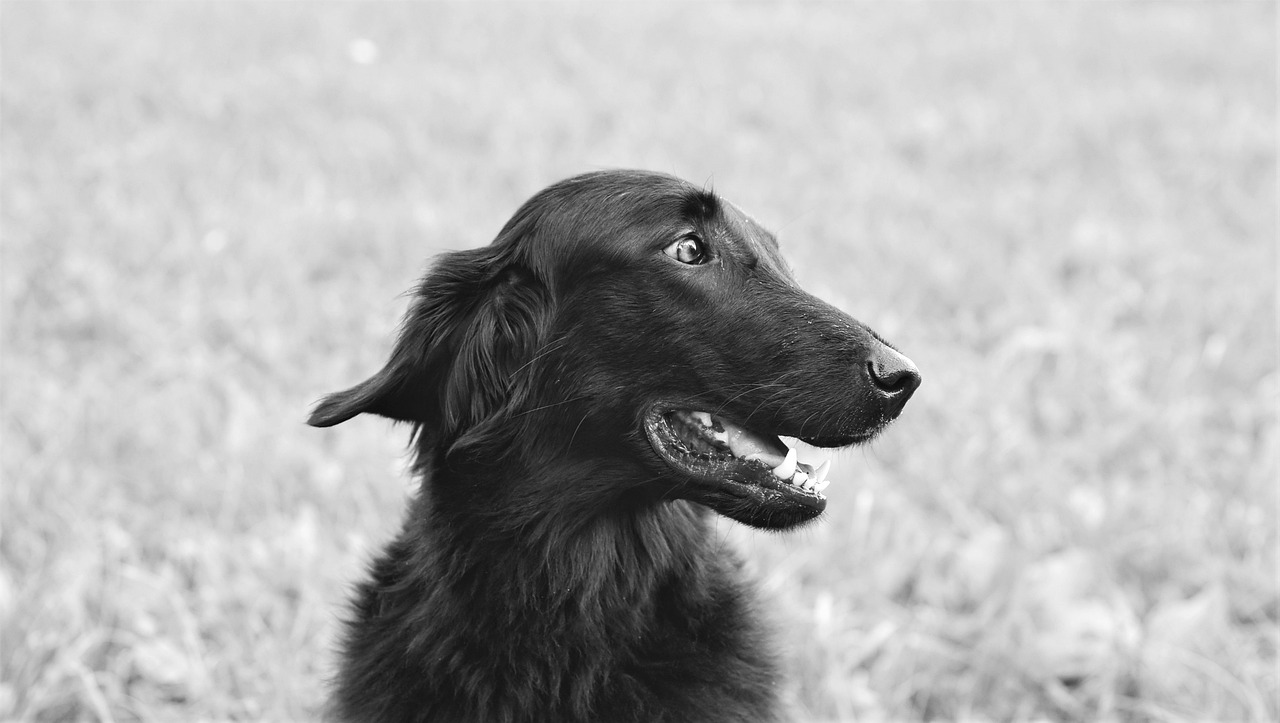
Post-Bath Care
After your senior dog has enjoyed a refreshing bath, it’s important to focus on to ensure their coat remains healthy and their skin is comfortable. Think of this stage as the finishing touch to a spa day; just like humans, dogs deserve a little pampering after their bath. Proper drying techniques and skin moisturizers play a crucial role in maintaining your dog's comfort and well-being. So, let’s dive into some effective methods!
First and foremost, drying your dog correctly is essential. You might be tempted to grab the nearest towel and start rubbing away, but that could lead to tangles and discomfort for your furry friend. Instead, consider these drying techniques:
- Towel Drying: Use a soft, absorbent towel to gently pat your dog dry. This method is gentle and helps remove excess water without causing stress.
- Low-Heat Dryer: If your dog is comfortable with it, using a low-heat dog dryer can be effective. Ensure you keep it at a safe distance to avoid overheating their sensitive skin.
Once your dog is dry, it’s time to address their skin. Senior dogs often experience dryness or irritation, so applying a gentle moisturizer can work wonders. Look for products specifically designed for dogs, as they are formulated to cater to their unique skin needs. A good moisturizer not only hydrates but also helps soothe any irritation that may have arisen during the bathing process. Just like how we love a good lotion after a shower, our furry companions appreciate the same care!
It's also worth noting that some senior dogs may have specific skin conditions that require special attention. Always consult your veterinarian for recommendations on the best products to use, especially if your dog has allergies or sensitive skin. Keeping an eye on their skin health can prevent issues down the line and ensure they feel their best.
In summary, post-bath care is all about ensuring your senior dog feels comfortable, clean, and loved. By employing gentle drying techniques and using quality moisturizers, you can help maintain their coat's health and enhance their overall bathing experience. Remember, treating your dog with care and respect during this process not only strengthens your bond but also contributes to their happiness and well-being.
Q1: How often should I bathe my senior dog?
A1: Generally, senior dogs should be bathed every 4 to 6 weeks, but this can vary based on their activity level and coat type. Always consider your dog's specific needs.
Q2: Is it necessary to use special shampoos for senior dogs?
A2: Yes, using shampoos formulated for sensitive skin can help avoid irritation and maintain coat health, as senior dogs often have more delicate skin.
Q3: What should I do if my senior dog resists bath time?
A3: Gradually introduce them to the bathing process. Make it a positive experience with treats and praise, and consider using a calming spray or pheromone products to ease their anxiety.
Q4: Can I use human moisturizers on my dog?
A4: It’s best to use products specifically designed for dogs, as human moisturizers can contain ingredients that may be harmful to pets.
Drying Techniques
This article provides essential tips and best practices for bathing and grooming senior dogs, ensuring their comfort and health during the process. Discover techniques tailored to their unique needs and sensitivities.
As dogs age, their grooming needs change. Understanding these specific requirements can help ensure that your senior dog feels comfortable and safe during bath time and grooming sessions.
Selecting appropriate shampoos and grooming tools is crucial for senior dogs. Look for products that cater to sensitive skin and coat conditions common in older dogs to avoid irritation.
Opt for hypoallergenic and moisturizing shampoos that soothe sensitive skin. These products help maintain a healthy coat while minimizing discomfort during baths for senior dogs.
Consider the benefits of organic grooming products over commercial ones. Organic options often contain fewer harsh chemicals, making them gentler on aging skin.
Using ergonomic grooming tools designed for ease of use can significantly reduce stress for both you and your senior dog during grooming sessions.
Employ gentle bathing techniques that prioritize comfort. Using a non-slip mat and warm water can help create a calming environment for your senior dog.
Establishing a regular grooming schedule is vital. Senior dogs may require more frequent grooming due to changes in their coat and skin condition, ensuring they remain clean and comfortable.
Learn to recognize signs that indicate your senior dog needs grooming, such as excessive shedding, matting, or skin irritations, to keep their coat healthy.
For dogs with mobility challenges, consider alternative grooming methods. Portable bathing systems and professional groomers can help accommodate their needs without causing stress.
After bathing, proper care is essential. Drying techniques and skin moisturizers can help maintain your senior dog's coat health and prevent dryness or irritation.
Once your senior dog has enjoyed a soothing bath, the next crucial step is drying them off properly. This process is not just about removing water; it’s about ensuring your dog feels comfortable and secure. Here are some effective drying techniques:
- Towel Drying: Start with a soft, absorbent towel. Gently pat your dog dry instead of rubbing, which can irritate their skin. Focus on areas where water tends to accumulate, such as under the belly and between the paws.
- Low-Heat Air Drying: If your dog tolerates it, using a low-heat blow dryer can be beneficial. Keep the dryer at a safe distance to avoid overheating their sensitive skin. Always keep it on a low setting and move it around continuously to avoid concentrating heat on one spot.
- Air Drying: If the weather permits, letting your dog air dry can also be a great option. Just ensure they stay in a warm, draft-free area. This method is particularly useful for dogs with thicker coats.
Regardless of the method you choose, always monitor your dog for signs of discomfort. If they seem anxious or stressed, it might be best to revert to towel drying or seek help from a professional groomer. Remember, the goal is to make the drying process as pleasant as possible.
Q: How often should I bathe my senior dog?
A: Most senior dogs benefit from a bath every 4-6 weeks, but this can vary depending on their activity level and coat condition.
Q: Can I use human shampoo on my dog?
A: It’s best to avoid human shampoos as they can disrupt a dog’s natural skin balance. Always opt for dog-specific products.
Q: What if my dog is afraid of water?
A: Gradually introduce your dog to water using treats and praise. Consider using a damp cloth for spot cleaning to ease them into the bathing process.
Moisturizing the Skin
After a refreshing bath, your senior dog deserves a little extra love and care, especially when it comes to their skin. As dogs age, their skin can become drier and more sensitive, making it essential to incorporate a moisturizing routine into their post-bath care. Think of it as applying a soothing balm to a cherished old book—preserving its beauty and integrity for years to come.
When selecting a moisturizer, it's crucial to choose products specifically formulated for dogs. Human lotions can contain ingredients that are harmful to pets, so always opt for pet-safe moisturizers. These products are designed to hydrate and nourish your dog's skin without causing irritation. Look for ingredients like aloe vera, which is known for its soothing properties, or oatmeal, which can help alleviate itching and discomfort.
Applying the moisturizer is just as important as selecting the right one. Start by gently towel-drying your dog after their bath to remove excess water, but be careful not to rub too hard—after all, we want to treat our furry friends with the utmost care! Once they’re slightly dry, you can apply the moisturizer. Use your hands to gently massage it into their skin, focusing on areas that tend to be drier, such as the elbows, paws, and belly. This not only helps hydrate their skin but also creates a lovely bonding moment between you and your dog.
To give you a clearer idea of some popular moisturizing products, here’s a quick comparison:
| Product Name | Key Ingredients | Benefits |
|---|---|---|
| Aloe Vera Gel | Aloe Vera, Vitamin E | Soothes and hydrates sensitive skin |
| Oatmeal Cream | Colloidal Oatmeal, Shea Butter | Relieves itching and moisturizes dry areas |
| CBD Oil Balm | CBD Oil, Coconut Oil | Reduces inflammation and promotes skin health |
Remember, consistency is key. Regular moisturizing can help prevent dry skin and keep your senior dog's coat looking shiny and healthy. If you notice any persistent dryness or irritation, don't hesitate to consult your veterinarian. They can recommend specific treatments tailored to your dog's unique needs.
- How often should I moisturize my senior dog's skin? Aim for moisturizing after every bath, or at least once a week if your dog has particularly dry skin.
- Can I use human lotion on my dog? No, human lotions can contain harmful ingredients. Always use products specifically designed for pets.
- What signs indicate my dog needs moisturizing? Look for signs like flaking skin, excessive scratching, or a dull coat.
Frequently Asked Questions
- How often should I bathe my senior dog?
Bathing frequency can vary based on your senior dog's specific needs, coat type, and activity level. Generally, senior dogs may need a bath every 4 to 6 weeks. However, if they have skin issues or get particularly dirty, you might need to bathe them more often. Always pay attention to their skin condition and adjust accordingly.
- What type of shampoo is best for senior dogs?
For senior dogs, it's essential to choose a hypoallergenic and moisturizing shampoo that caters to their sensitive skin. Look for products that are specifically formulated for older dogs, as these often contain soothing ingredients that help maintain a healthy coat without causing irritation.
- What signs indicate my senior dog needs grooming?
Watch for signs such as excessive shedding, matting, or skin irritations. If you notice your dog scratching more than usual or if their coat appears dull and unkempt, it’s time for a grooming session. Regular grooming helps keep their coat healthy and can prevent discomfort.
- Are there special grooming tools for senior dogs?
Yes! Using ergonomic grooming tools designed for ease of handling can make the grooming process much more comfortable for both you and your senior dog. Look for brushes and combs that are gentle on the skin and easy to grip, reducing stress during grooming sessions.
- What should I do if my senior dog has mobility issues?
If your dog struggles with mobility, consider using portable bathing systems or hiring a professional groomer who can accommodate their needs. You might also explore alternative grooming methods that allow for a more comfortable experience, such as grooming them while they are resting on a non-slip mat.
- How can I keep my senior dog's skin moisturized after a bath?
Applying a gentle moisturizer after bathing can help soothe and hydrate your senior dog's skin, especially if they have dryness or sensitivity. Look for products specifically designed for dogs to ensure they are safe and effective for your furry friend.
- What drying techniques are safe for senior dogs?
When drying your senior dog, consider methods like towel drying or using a low-heat dryer. Avoid high heat, as it can be too harsh for their sensitive skin. Always monitor your dog’s comfort during the drying process to ensure they feel safe and relaxed.

